2016 TIBIR Pilot Grant Awardees
TBI-induced anosmia, anhedonia, and depression
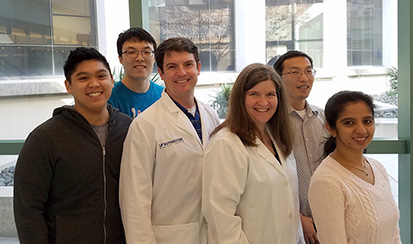
PI: Julian P. Meeks, Ph.D.
Department: Neuroscience
Challenge
Traumatic brain injuries (TBIs), including concussions, cause damage to multiple areas within the brain, generating a spectrum of negative symptoms. Among these is anosmia, or a lack of the sense of smell. Losing one’s sense of smell results in the lack of the ability to perceive flavor in food (which requires both taste and smell) and has other negative consequences that impact anosmia patients’ lives (Smell Disorders). Anosmia is also correlated with anhedonia (an inability to experience pleasure) and depression. Anosmia occurs in TBI patients because of damage to delicate nerves that connect the nose to the brain and can damage olfactory (smell-related) areas of the brain itself. However, we know little about the specific neurobiological deficits underlying TBI-induced anosmia. As such, there are very few therapeutic options available to anosmic patients.
Approach
Animal models provide researchers the ability to perform careful analysis of the brains’ response to mild concussive injuries. We will work collaboratively to develop a quantitative experimental animal model of TBI-induced anosmia. We will use high resolution whole brain microscopy (UT Southwestern Whole Brain Microscopy Facility) to analyze the changes in olfactory brain regions associated with smell disruption. We will then evaluate therapeutic interventions that may improve olfactory function.
Overall Goals
This Pilot Grant is designed to build an infrastructure for quantitative TBI-induced anosmia research that will be used as a platform for therapeutic discovery.
Significance
In the long-term, creating a successful TBI-induced anosmia research program will generate knowledge about therapies that do (and do not) improve outcomes for anosmia sufferers.
The role(s) of the choroid plexus in brain injury and disease
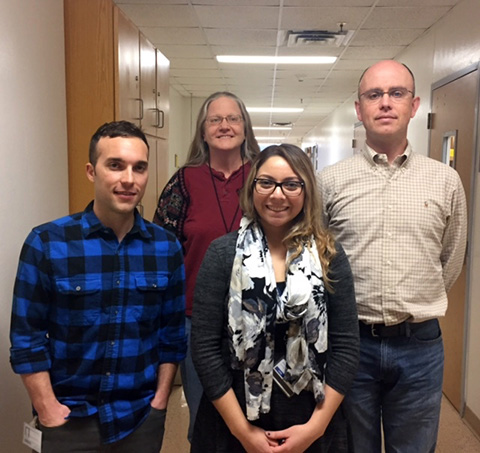
Department: Physiology, Internal Medicine
Challenge
The choroid plexus is a small, highly vascularized tissue located within each ventricle that generates cerebrospinal fluid, releases neurotrophic factors, and serves as a portal for immune cell entry to the CNS. Thus, the goals of this pilot project are to determine whether traumatic brain injury impacts choroid plexus integrity and function, and whether altered choroid plexus function impacts recovery from brain injury.
Approach
Limited research has been conducted on the choroid plexus using mouse models of brain injury and disease, primarily because this organ is too small for many conventional methods. However, we have recently developed novel techniques that are so exquisitely sensitive that we can perform comprehensive lipidomic and transcriptomic assays. We will subject mice to the controlled cortical impact (or sham) protocol for TBI, then perform “omics” analyses of choroid plexus, CSF, and serum. We will also test the effects of a novel therapeutic agent on these outcomes.
Overall Goals
These studies will be the first, to our knowledge, to: (1) define the transcriptome of the adult mouse choroid plexus; (2) evaluate the impact of TBI and/or our therapeutic agent on choroid plexus lipid metabolism and function; and (3) identify novel lipid biomarkers in serum and CSF following TBI.
Significance
Firstly, these studies will provide a great deal of basic scientific information on the biology of the choroid plexus. Secondly, the outcome of these studies may reveal novel strategies to target choroid plexus function to enhance recovery from traumatic brain injury, and identify biomarkers to monitor that recovery.
Understanding variable susceptibility of different neural subtypes to trauma-induced neurodegeneration
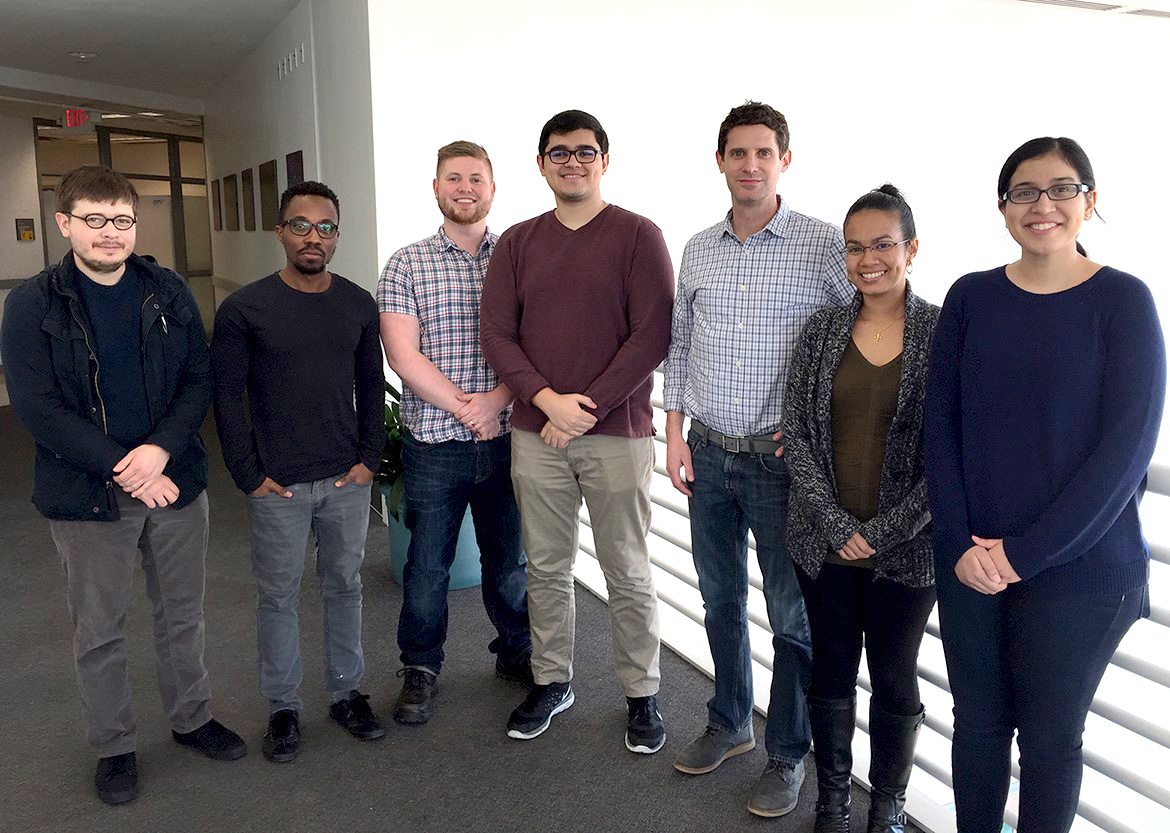
Department: Molecular Biology
Challenge
TBI encompasses a vast array of heterogeneous insults yet clinical studies typically do not stratify patient injuries based on the type of force or the site of injury, which has complicated interpretation of the different disease states. Therefore, researchers utilize rodent models to investigate TBI in a more controlled experimental setting. Yet rodents studies still possess several limitations which make them less-than-ideal for an emerging TBI field. To accelerate the rate of discovery, we have established the first blunt force trauma model of neurodegeneration in the short-lived nematode C. elegans which is particularly amenable to research on the aging nervous system and high-throughput analysis. Blunt force trauma to C. elegans recapitulates several immediate and long-term phenotypes observed in mammalian head trauma studies including many physiological, molecular, metabolic and pathologic consequences. Through randomized neural injury on thousands of animals, C. elegans provide an excellent opportunity to cover a broad spectrum of TBI in a single experiment and uncover the underlying protective mechanisms.
Approach
We have discovered that tau in its aggregated form can assume a variety of disease-specific conformations (termed “strains”) that underlie clinical syndromes. Detection of tau aggregates in the brain will hold the key to accurate diagnosis and measurement of appropriate treatment responses. There are several existing PET ligands with good affinity for tau, but it is not clear if these ligands bind all tau aggregate conformers with the same affinity. We will use mass spectrometry to measure the affinity of existing PET ligands for tau strains isolated in the Diamond lab. We will measure PET ligand affinity for tau using label-free mass spectrometry in the Mirzaei lab.
Overall goals
The study will examine the sensitivity of different neural subsets to trauma-induced neurodegeneration and uncover new effectors of this process through forward genetic screening approaches.
Significance
The vast array of different head injuries observed in the clinic have complicated our ability to define brain regions or neural classes which are hypersensitive to blunt force injury. With our new worm model, we have the capacity to better define the neural subsets that are more sensitive to blunt force injury. Furthermore, we have the ability to perform the first forward genetic screen on neural trauma and implicate new gene targets in trauma-induced neurodegeneration. These studies will lay the foundation for future TBI studies in both rodents and humans.
Association between cerebrovascular hemodynamics and clinical symptoms in sports-related concussion

Department: Physical Medicine and Rehabilitation
Challenge
Almost 3.8 million athletes in the United States sustain a concussion annually and this is an underestimation based on the number of undetected and underreported incidences. Despite large number of incidences, the pathophysiology behind the injury is poorly understood. Athletes in general self-report fewer symptoms at the time of injury to trainers. The high rate of incidence, under-reporting of symptoms, and highly subjective assessments highlight the imminent need for objective biomarkers for accurate diagnoses and prudent return-to-play decisions following a sports-related concussion particularly in young athletes for whom the risk of second-impact syndrome is elevated.
Approach
Reduced cerebral blood flow (CBF) is associated with functional disturbances following concussion. Disruption in the structural integrity of the cerebral vasculature and impaired CBF regulation may contribute to this reduction CBF. In our study, transcranial Doppler (TCD) ultrasonography will be used to examine CBF regulation. This inexpensive and noninvasive approach has made it possible to assess cerebrovascular function in humans with high temporal resolution. Current study will examine CBF regulation in a prospective cohort of collegiate athletes during acute (3 days) and post-acute (21 days and 3 months) following concussion.
Overall Goals
The study is designed to examine the associations between impairments in CBF regulation and blood biomarkers of neuronal damage to clinical symptoms associated with the diagnosis and decisions for return-to play in sports related concussion.
Significance
Exacerbation of symptoms during physical and cognitive exertion may be linked with altered CBF as a result of impaired CBF regulation. Therefore, examination of regional CBF regulation in response to cognitive stress may serve as an objective biomarker confirming clinical diagnosis following concussion and aid in return-to-play decisions in athletes.
PET ligands for traumatic brain injury

Department: Center for Alzheimer’s and Neurodegenerative Diseases, Neurology
Challenge
Tau deposition in fibrillar aggregates is linked to myriad neurodegenerative diseases, and underlies dementia in Alzheimer’s Disease (AD) and Chronic Traumatic Encephalopathy (CTE). These diseases, along with over 20 other distinct neurodegenerative syndromes, are termed tauopathies. Tauopathies are very hard to diagnose and even harder to subtype. AD is the only tauopathy with an established diagnostic assay, and there are no validated biomarkers for the other tauopathies. Tauopathies are currently diagnosed by assessing symptoms by a thorough medical history, physical examination, and evaluation of memory and cognition. Such diagnoses often come too late for preventative treatments. Positron Emission Tomography (PET) can detect protein aggregation in patients, but there are no established PET ligands to detect tau across syndromes, or discriminate these different conditions.
Approach
We have discovered that tau in its aggregated form can assume a variety of disease-specific conformations (termed “strains”) that underlie clinical syndromes. Detection of tau aggregates in the brain will hold the key to accurate diagnosis and measurement of appropriate treatment responses. There are several existing PET ligands with good affinity for tau, but it is not clear if these ligands bind all tau aggregate conformers with the same affinity. We will use mass spectrometry to measure the affinity of existing PET ligands for tau strains isolated in the Diamond lab. We will measure PET ligand affinity for tau using label-free mass spectrometry in the Mirzaei lab.
Overall goals
We will determine the affinity of existing tau PET ligands for distinct tau aggregate conformers by mass spectrometry to create a test panel for accurate tauopathy diagnosis.
Significance
This study holds the promise of developing multiplexed PET ligands to derive a binding “signature” that defines particular clinical syndromes. Based on the use of PET imaging in other disorders, this could lead to highly personalized medicine to identify patients with CTE and monitor their response to therapy.
Lower body negative pressure will reduce intracranial pressure, improve intracranial instability and expedite ICU discharge in the setting of severe traumatic brain injury
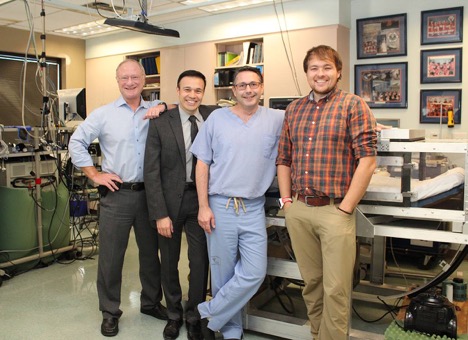
PI: Benjamin Levine, M.D., Bert B. Vargas, M.D.
Department: Internal Medicine, Neurology and Neurotherapeutics
Challenge
Since 2010, traumatic brain injury (TBI) related hospitalizations have increased significantly for individuals over the age of 45 and are a significant cause of disability, accounting for about 30 percent of injury-related deaths in the United States. Elevated ICP is common after moderate to severe TBI and sustained elevation greater than 20 mmHg is associated with higher morbidity and mortality. When noninvasive measures fail to adequately lower ICP, intraventricular drainage and decompressive hemicraniectomy are indicated but are potentially complicated by surgical risks. Therefore, there is a clear and strong need for noninvasive treatments that are complementary to existing surgical options.
Approach
A cohort of patients admitted to the Neurologic ICU with a history of moderate or severe TBI will be placed inside a lower body negative pressure (LBNP) chamber, sealed just below the diaphragm. Throughout the intervention, hemodynamics and cerebral perfusion pressure will be monitored to maintain perfusion greater than 60 mmHg and intracranial pressure (ICP) will be carefully monitored for changes in intracranial pulse pressure. Time from admission to discharge from the ICU will be recorded and the Modified Rankin Scale (mRS) will be determined as an estimate of patient disability at the time of discharge from the hospital and at 6 month follow up.
Overall goals
To document the safety and efficacy of LBNP to consistently and effectively lower intracranial pressure, improve intracranial stability, and minimize patient disability.
Significance
This study could support the use of LBNP as an effective and noninvasive treatment for patients with elevated ICP from any cause while also decreasing the need for pharmacologic or surgical interventions thereby helping to minimize iatrogenic morbidity.
Whole-brain tracking of rewiring of neuronal network after brain injury
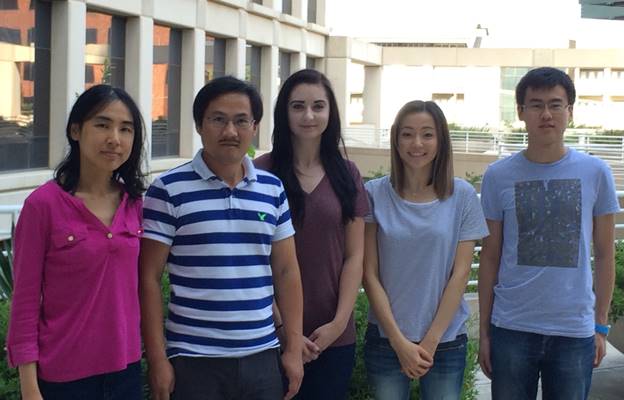
PI: Wei Xu, Ph.D.
Department: Neuroscience
Challenge
Following brain injuries some of the functions previously carried out by the damaged neurons may be gradually taken over by adjacent healthy neurons. This functional reorganization of the brain may be achieved through rewiring of neuronal network. Yet direct evidence for rewiring is still missing, largely due to the lack of technology to trace neuronal connectivity over time. This leaves us a few outstanding questions: (1) whether rewiring indeed occurs after brain injuries and if so, how it contributes to the functional recovery; (2) if rewiring is a modulated process which can be accelerated by manipulations of the underlying molecular mechanisms; (3) If promoting rewiring facilitates functional recovery or/and enables the recovery of brain functions which were previously not recoverable?
Approach
We will develop novel technology by engineering trans-neuronal transportable viral vectors to monitor the dynamic modifications on neuronal connectivity and to utilize the new approach to examine the reorganization of brain network after brain injuries.
Overall Goals
We will determine if rewiring contributes to functional recovery after brain injuries and reveal the molecular mechanisms underlying rewiring.
Significance
The study will provide a general applicable technology to track rewiring, a critical form of brain plasticity, and will help to identify the molecular mechanism underlying rewiring, which may open the doors to more efficient therapy for recovery from traumatic brain injuries.

